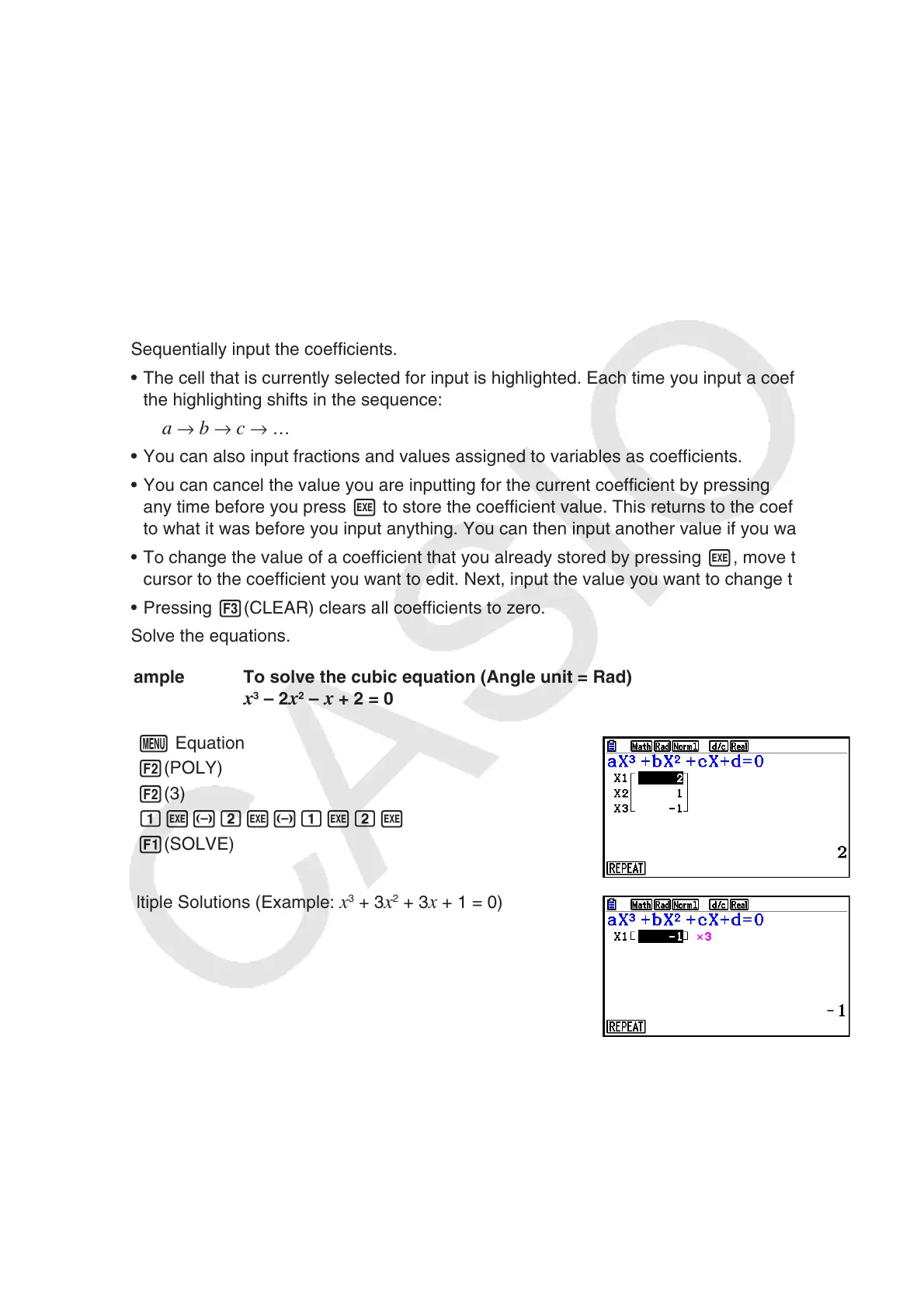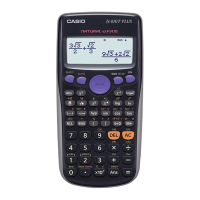4-3
2. High-order Equations from 2nd to 6th Degree
Your calculator can be used to solve high-order equations from 2nd to 6th degree.
• Quadratic Equation:
ax
2
+ bx + c = 0 ( a 0)
• Cubic Equation:
ax
3
+ bx
2
+ cx + d = 0 ( a 0)
• Quartic Equation:
ax
4
+ bx
3
+ cx
2
+ dx + e = 0 ( a 0)
…
1. From the Main Menu, enter the Equation mode.
2. Select the POLY (Polynomial) mode, and specify the degree of the equation.
You can specify a degree 2 to 6.
3. Sequentially input the coefficients.
• The cell that is currently selected for input is highlighted. Each time you input a coefficient,
the highlighting shifts in the sequence:
a → b → c → …
• You can also input fractions and values assigned to variables as coefficients.
• You can cancel the value you are inputting for the current coefficient by pressing J at
any time before you press w to store the coefficient value. This returns to the coefficient
to what it was before you input anything. You can then input another value if you want.
• To change the value of a coefficient that you already stored by pressing w, move the
cursor to the coefficient you want to edit. Next, input the value you want to change to.
• Pressing 3(CLEAR) clears all coefficients to zero.
4. Solve the equations.
Example To solve the cubic equation (Angle unit = Rad)
x
3
– 2 x
2
– x + 2 = 0
1 m Equation
2 2(POLY)
2(3)
3 bw-cw-bwcw
4 1(SOLVE)
Multiple Solutions (Example: x
3
+ 3 x
2
+ 3 x + 1 = 0)

